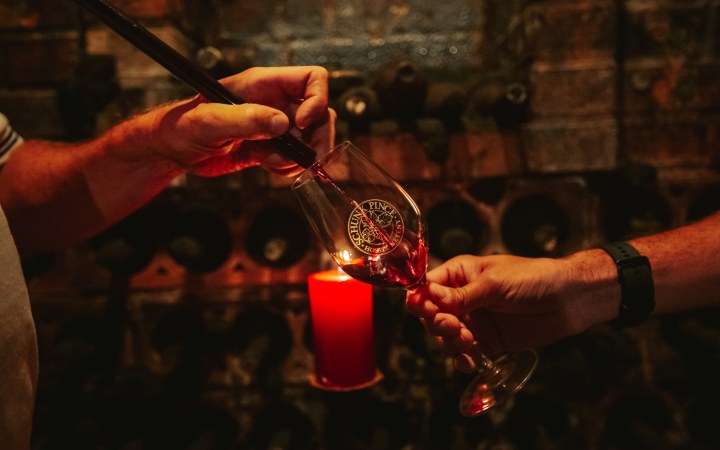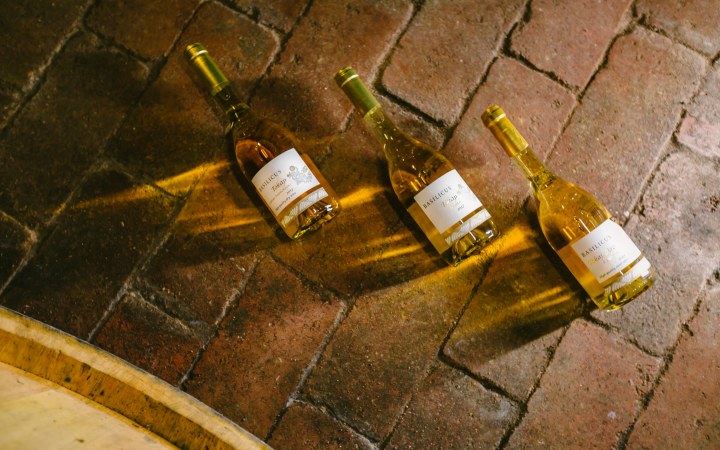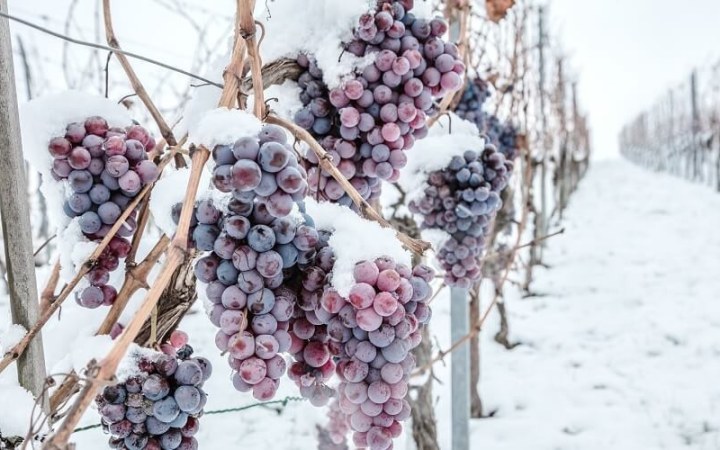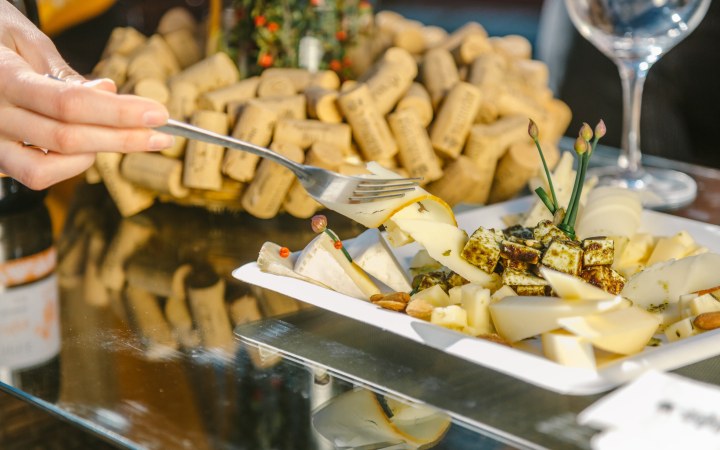What makes red wine red?
Before diving into the Hungarian red wines you must try (and the foods you should pair them with), let’s explore the history of red wine in this country for a second. After all, we’re talking about the same country that became world-famous for Tokaji Aszu, a white dessert wine nicknamed “The Wine of Kings and the King of Wines” by none other than Louis XIV of France.
So, how did red wine gain prominence in this traditionally white wine-producing country?
The truth is that red wines virtually didn’t exist in Hungary before the Ottomans conquered the Balkans around the 15th century. Some say that the first red grape varietals entered Hungary from the south, carried by people fleeing from neighboring Serbia. Others say red wines only appeared in the 17th century with the ever-so-popular Kadarka.

Whatever the case, one thing remains the same – red wines soon took Hungary by storm.
This red wine “fever” affected four Hungarian wine regions the most –Sopron and Eger in the north and Szekszárd and Villány in the south. The southern regions are particularly suitable for growing red wine grapes due to their warm climate and well-drained soil, while the volcanic soil of the northern regions imparts unique characteristics to the red wines produced there.
But what drew the winemakers in these regions (and beyond) to red wine? The answer to this question partly lies in its difference from white wine. But the color of these wines isn’t the only thing that sets them apart. They also differ in the following aspects:
- Winemaking process. When producing red wines, the grape skin remains in contact with the juice during fermentation. The skin is actually what gives red wine its distinctive color since both white and red grapes produce clear juice. The longer the fermentation lasts, the deeper the color and the bolder the flavor of the red wine.
- Grape varieties. Red and black grape varieties produce red wines, while yellow and green grapes commonly contribute to white wine production.
- Harvest time. Red grapes are harvested a few weeks later than their white counterparts. This leaves enough time for tannins (slightly bitter-tasting plant compounds in grape skins and seeds) to develop.
- Aging. Red wine is typically aged in oak barrels, which Hungary is known for. The same can’t be said for white wines, as they tend to take on too much of the oak’s notes in the process.
- Alcohol content. Red wines are generally higher in alcohol content, making them a bolder and more robust choice.
The most famous red wine grape in Hungary
Without further ado, we present the 12 Hungarian red wines that showcase the richness and diversity of the country’s red winemaking tradition.
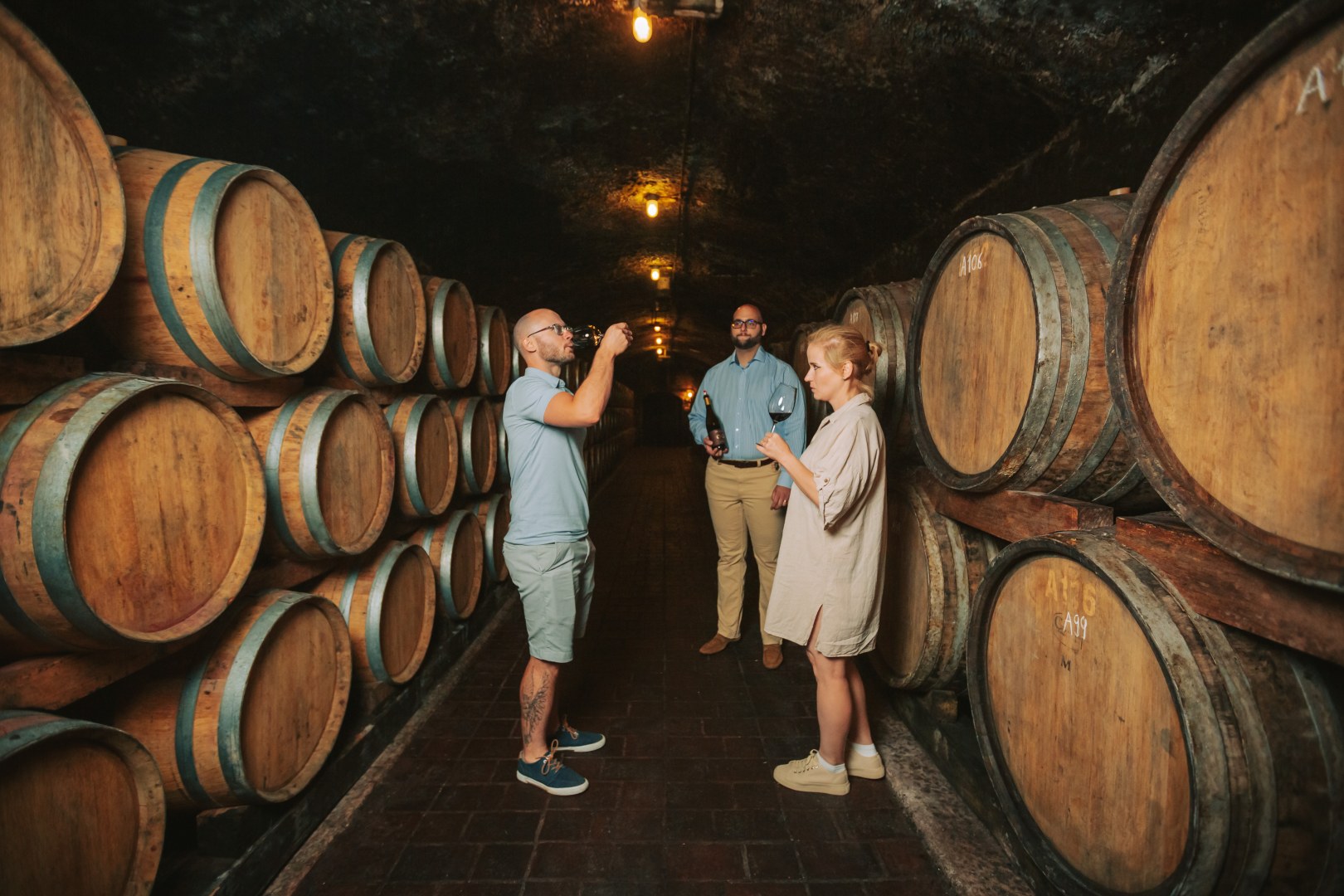
Egri Bikavér
Egri Bikavér, arguably the most well-known Hungarian red wine, has a rich history steeped in legend. Given that this wine’s name translates to “Bull’s Blood,” you can probably guess just how bold its flavor profile is. As the name suggests, it primarily comes from the Eger wine region. Visit the Demeter wine bar in this region to taste everything it has to offer.
Szekszárdi Bikavér
Another staple among the Hungarian red wines, Szekszárdi Bikavér, is a vibrant ruby-colored wine from the Szekszárd wine region. Throughout history, this wine was drunk (and admired) by many notable people, including the renowned composer Franz Liszt. He, and many others, enjoyed this wine’s pronounced fruit and spice notes and the silky, velvety tannins.
Kékfrankos
Given that Kékfrankos is Hungary’s most planted red grape, leaving Hungary without trying the red wines it produces is akin to missing a vital chapter in the country’s viticultural story. Most Kékfrankos wines are medium-bodied and offer a hint of sour cherry and spices, making them a treat for the palate.
Kadarka
Kadarka was one of the first (if not the first) red grape varieties to appear in Hungary. This means that Hungarian winemakers have had enough time to perfect the wines produced with this variety. Visit Szekszárd, the wine region with the highest-quality Kadarkas, to taste their fruity and sometimes spicy notes.
Blauburger
Blauburger might be a lesser-known player in the Hungarian wine scene, but this doesn’t make it any less intriguing. This wine’s distinctively deep color is the first thing you’ll notice. But don’t let this fool you – Blauburger has a pretty light body and low tannins.
Cabernet Franc
Venture into the Villány wine region to find a rarity in the wine world – single varietal Cabernet Franc. This premium wine will wow you with its intense character and distinctive flavor profile, making you question why it isn’t nearly as famous as its widely lauded relative, Cabernet Sauvignon.
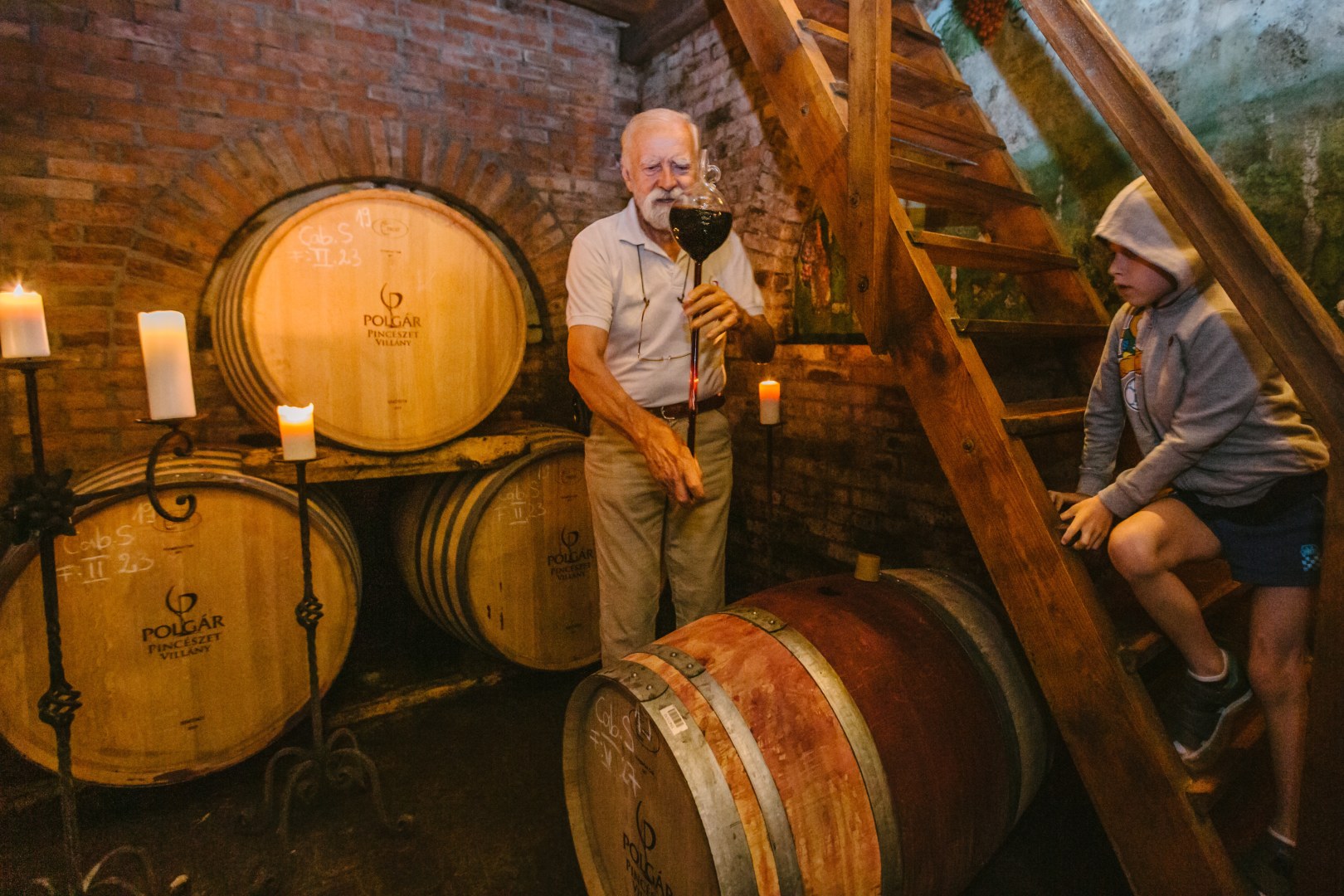
Cabernet Sauvignon
There’s a reason why Cabernet Sauvignon is one of the most well-known Hungarian wines. Not to mention its global popularity! This wine can be grown virtually anywhere in the world, and every variety is seemingly tastier than the one before. In Hungary, you can taste this full-bodied delight dominated by spicy and herbal notes in the Villány wine region.
Merlot
Where there’s Cabernet Sauvignon, Merlot isn’t far behind. Like its relative, Merlot is a highly adaptable grape variety that can thrive virtually anywhere. The same goes for Hungarian wine regions. However, we advise booking a wine tasting in the Eger wine region to try the best of the best.
Pinot Noir
Pinot Noir wines might come from an ancient grape variety, but they’ve remained as popular as ever. Hungarian Eger, Balatonboglár, and Villány wine regions offer the perfect terroir for cultivating this sophisticated wine with a silky texture. If you want to smell its enticing aromas of red berries and taste its delicate earthy notes, that’s where you need to head.
Syrah (Shiraz)
Syrah is an extremely trendy black grape, so it’s no wonder Hungarian winemakers have embraced its allure, putting a unique twist on this globally beloved varietal. Since this grape variety is relatively new to Hungary, you can be among the first to follow its evolution.
Zweigelt
Originating in Austria, this grape variety was embraced in Hungary in the late 20th century. Now, it’s primarily cultivated in the Sopron wine region, where roughly every tenth wine is a Zweigelt. When young, this vibrant wine boasts a distinctive purple color and prominent notes of spice and red berries.
Portugieser (Kékoportó)
Portugieser is one of the flagship grape varieties of the Villány wine region. Most red wines made with this grape variety are light-bodied, fruity, and easy to drink. That’s what makes them so popular and accessible to a wide range of wine enthusiasts.
Pairing food with the right red wine
Though a glass of quality red wine is a delight in itself, pairing it with the right food transforms this simple pleasure into a symphony of flavors. Before recommending the perfect pairings with Hungarian red wines, let’s discuss the dos and don’ts of pairing red wine and food.

- Do: choose a wine that’s more acidic and sweeter than your dish.
- Do: pair full-bodied wines with foods high in fat and rich in flavor.
- Do: pair the wines and dishes from the same terroir.
- Don’t: pair red wine with garlic, asparagus, and Brussels sprouts, as these vegetables contain compounds that affect its taste negatively.
- Don’t: pair wine with foods rich in chili and mint, as these ingredients neutralize your taste buds.
- Don’t: eat eggs when drinking wine, as these protein powerhouses can block your taste buds from fully perceiving the wine.
Now that you understand the basics of food-wine pairing, take a look at which dishes you should eat when trying the best Hungarian red wines.
- Egri Bikavér: Hungarian-style soups
- Szekszárdi Bikavér: spicy paprika dishes
- Kékfrankos: Italian tomato dishes
- Kadarka: Hungarian chicken paprikash
- Blauburger: pepper ratatouille
- Cabernet Franc: sweet potato curry
- Cabernet Sauvignon: steak
- Merlot: roast game
- Pinot Noir: roast chicken or mushroom risotto
- Syrah: barbeque
- Zweigelt: spicy fish soup
- Portugieser: baked vegetable dishes
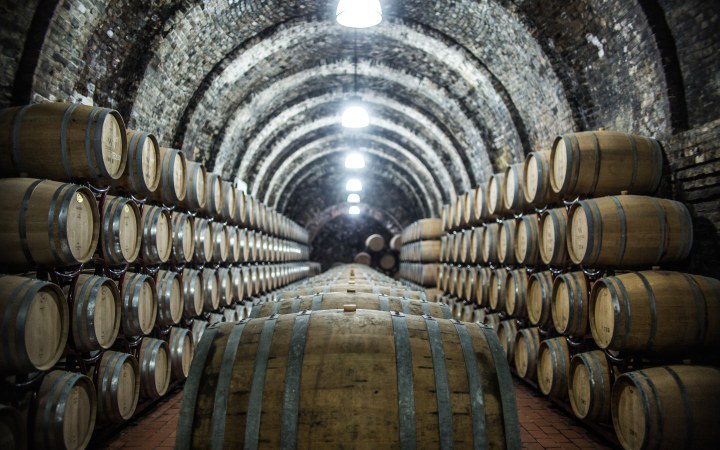
Jammertal wine tasting with internationally awarded red wines
Villány
7 590 Ft
Taste the richness of the Hungarian red wines
If your mouth almost started watering while reading about the velvety textures and robust flavors of Hungarian red wines, we’ve got good news. Borindex offers an incredible variety of wine-tasting programs where you can dive deep into the delicious world of these wines. Pick your favorite(s), find where it’s cultivated, and go on a sensory journey like never before.

